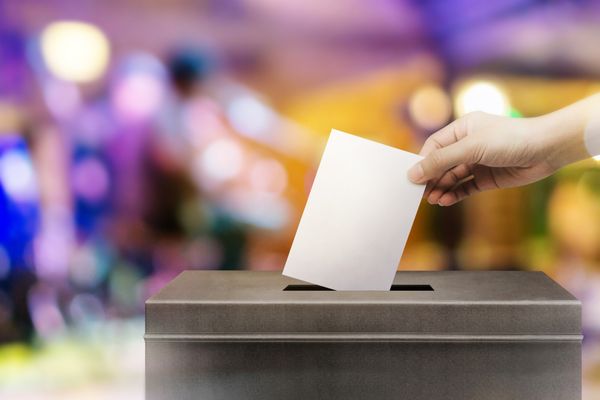2.3.1
The Nature of Support for the Weimar Government
Nature of Support for the Weimar Republic
Nature of Support for the Weimar Republic
Burdened with the ‘stab in the back myth’, the Weimar Republic had to overcome significant opposition. However, evidence from elections suggests that people did support the Weimar Republic and its democracy.


Support from parties
Support from parties
- Several parties bought into the Weimar constitution and wanted to strengthen democracy.
- This included:
- The SPD (Social Democratic Party).
- The Zentrum Party.
- The DDP (German Democratic Party).
- Later, the DVP (German People's Party).


Electoral success
Electoral success
- Throughout the Weimar Republic’s existence, moderate parties always received more votes than extremist parties.
- During the ‘golden years’, moderate parties saw a rise in support.
- 1919: SPD 37.9% (165 seats); Zentrum 19.7% (91 seats); DDP 18.6% (75 seats).
- 1920: SPD 21.7% (102 seats); USPD 17.9% (84 seats); DNVP 15.1% (71 seats).
- May 1924: SPD 20.5% (100 seats); DNVP 19.5% (95 seats); Zentrum 13.4% (65 seats).
- Dec 1924: SPD 26% (131 seats); DNVP 20.5% (103 seats); Zentrum 13.6% (69 seats).
- 1928: SPD 29.8% (153 seats); DNVP 14.2% (73 seats); Zentrum 12.1% (61 seats).


Decline in support
Decline in support
- Harsh economic conditions polarised politics. People felt dissatisfied with moderate parties and sought more radical solutions from extremists.
- 1930: SPD 24.5% (143 seats); NSDAP 18.25% (107 seats); KPD 13.1% (77 seats).
- Jul 1932: NSDAP 37.3% (230 seats); SPD 21.58% (133 seats); KPD 14.32% (89 seats).
- Nov 1932: NSDAP 33.1% (196 seats): SPD 20.43% (121 seats); KPD 16.86% (100 seats).


Undermined by Hindenburg
Undermined by Hindenburg
- Arguably, Hindenburg (the President of Weimar) was not wholly committed to the Weimar Constitution.
- He perpetuated the ‘stab in the back myth’.
- Hindenburg frequently used article 48, which circumvented the Reichstag and democracy.
1Political & Governmental Change, 1918-1989
1.1Creation & Collapse of Weimar, 1918-1932
1.2Nazi Dictatorship, 1933-1945
1.3Return to Democratic Government, 1945-1989
2Opposition, Control & Consent 1918-1989
2.1Opposition to Government, 1918-1989
2.2Controlling the People, 1918-1989
3Economic Developments & Policies, 1918-1989
3.1Reacting to Economic Challenges, 1918-1932
3.2Controlling the Economy, 1933-1945
3.3Creating the Social Market Economy, 1945-1989
4Aspects of Life, 1918-1989
4.1Attitudes Towards Women, 1918-1989
4.2Education & Cultural Developments, 1918-1989
5Historical Interpretations
5.1Influence of German History
5.2Hitler & Foreign Policy
5.3Contribution of Other Nations to WW2
5.4Reasons for Invading Poland
Jump to other topics
1Political & Governmental Change, 1918-1989
1.1Creation & Collapse of Weimar, 1918-1932
1.2Nazi Dictatorship, 1933-1945
1.3Return to Democratic Government, 1945-1989
2Opposition, Control & Consent 1918-1989
2.1Opposition to Government, 1918-1989
2.2Controlling the People, 1918-1989
3Economic Developments & Policies, 1918-1989
3.1Reacting to Economic Challenges, 1918-1932
3.2Controlling the Economy, 1933-1945
3.3Creating the Social Market Economy, 1945-1989
4Aspects of Life, 1918-1989
4.1Attitudes Towards Women, 1918-1989
4.2Education & Cultural Developments, 1918-1989
5Historical Interpretations
5.1Influence of German History
5.2Hitler & Foreign Policy
5.3Contribution of Other Nations to WW2
5.4Reasons for Invading Poland
Unlock your full potential with Seneca Premium
Unlimited access to 10,000+ open-ended exam questions
Mini-mock exams based on your study history
Unlock 800+ premium courses & e-books